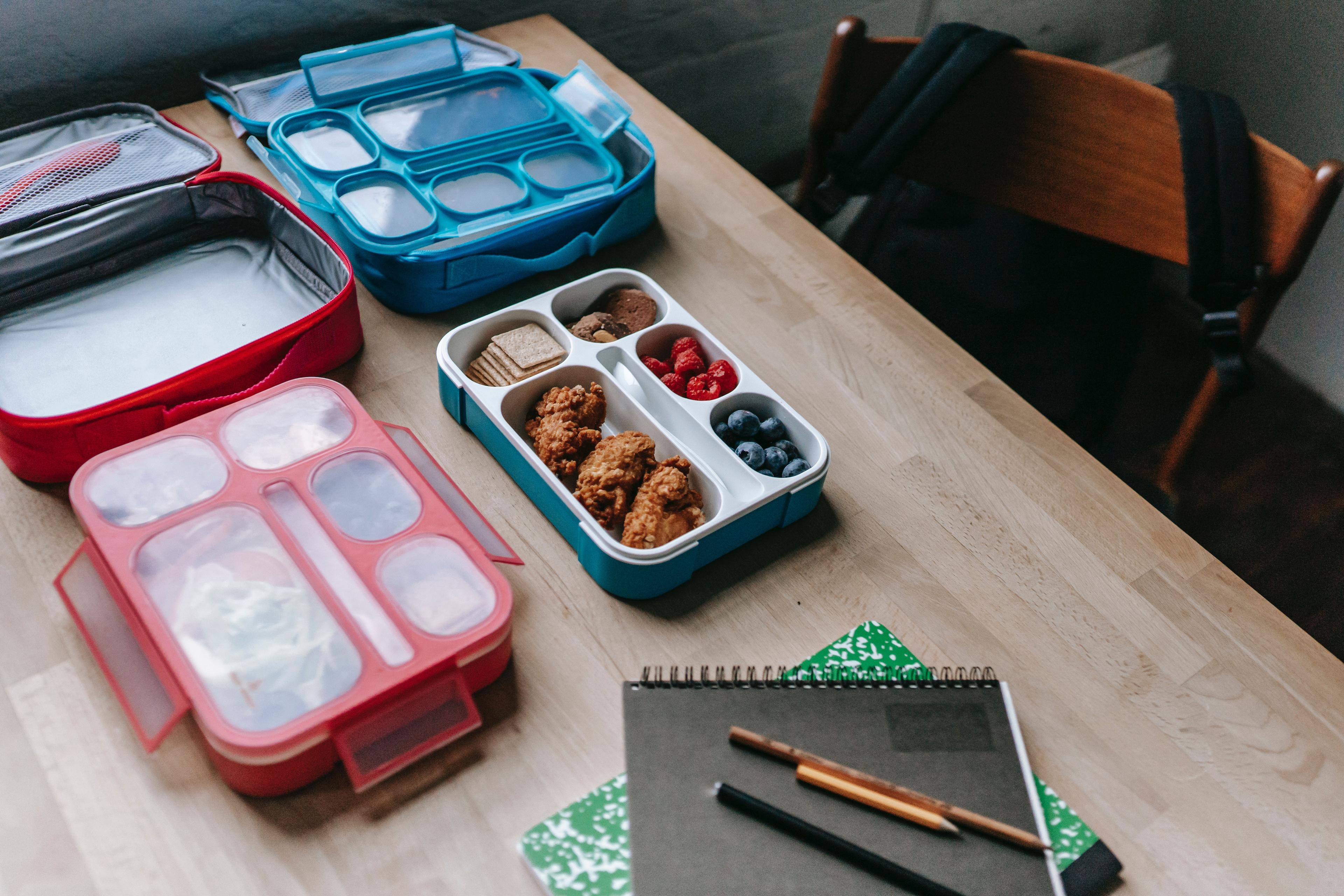
For a young person in eating disorder recovery, going back to school—whether at the end of summer or after taking time off for treatment—can be a cause for celebration. It’s a milestone of progress, a chance to reconnect with friends and activities, and a return to some semblance of normalcy. But it can also be fraught with challenges, not the least of which center around eating.
If you’ve decided that you or your loved one are ready to go back to school or college, you’ve probably already put in ample work to form a healthy foundation and make headway toward stable recovery. Still, it’s important to be aware of the various food-related challenges that may arise and learn tools and skills to ease the transition.
The challenges of the back-to-school transition
Whether your loved one is returning to school or to college, and whether it’s after summer break or a break for eating disorder treatment, similar challenges tend to come up. Here are some factors that can make eating at school extra challenging:
- Chaos at lunchtime
Several of my middle and high school-age clients say it can be extremely stressful to complete meals in a noisy, busy cafeteria. It can also be hard for them to find space between or during classes for snacks, whether it’s because of school rules, packed schedules, or other variables.
Plus, kids often experience more of a time crunch during their school lunches than they would at home or in treatment, and meals are often at different times than what they’re used to. It’s not uncommon for school lunches to be as early as 10:30 in the morning, and students may only be given 20 or 30 minutes to make it to the cafeteria, potentially buy their lunch, eat their food, and then make it to the next class. The imposition of school meal schedules can also make intuitive eating challenging for those who are at that point in recovery.
- Reduced support with meals and snacks
“We find that clients struggle with lack of oversight from their parents or caregiver, who may have been previously ‘in charge’ of preparing meals and making sure they were eating adequately,” explains dietitian Eva Haldis MS, RD, LDN.
Eating disorder behaviors can sneak in when meal- and snack-time support is gone or lessened, especially if it’s someone’s first time eating away from their family or care team. This leaves young people more vulnerable to using behaviors like throwing food away.
- Food comparisons and diet culture
Food and body comparisons are another common challenge young people face at school. Some clients tell me it can feel like their eating disorder is sitting across from them in the cafeteria.
“Many of their peers may not be eating the same types or amounts of food,” says dietitian Elyssa Toomey, RDN. “Sadly, disordered eating is common among the school-aged population, and it may be very triggering for a student in recovery to meet their needs when their peers are skipping meals or minimally eating.”
- Body image distress
“Middle and high school years are times of significant growth and development,” Toomey says. So, eating disorder recovery as a preteen or teen has the added layer of puberty, and the natural hormonal and body changes that come along with it, making body image worse —which may make relapse more likely, research shows.”
My school-age clients share that going back to school can negatively impact body image because being around new people or people they haven’t seen for a long time can bring up fear of judgment. “The student may have recovered into a larger body,” says Kristin Draayer, RDN. “While this body size is healthy, it could elicit discomfort or, unfortunately, even weight stigma or weight bias in a school environment”.
Tips for handling meals and snacks at school
Recovery is a nonlinear experience. It’s full of highs and lows, times of ease and times of challenge—and the return to school is likely to come with plenty of challenges. While you can’t prepare for everything that might come up, you can make a plan to navigate meals and snacks, which can be one of the hardest aspects of going back to school.
Here are some expert-endorsed tips to help ease the transition and keep your child on track as school starts:
- Make a clear plan with your care team.
Well before the big first day, make a clear plan with your dietitian and therapist. “It’s helpful to think through all the logistics of meals and snacks when going back to school,” advises Erin Reeves, RD, Director of Nutrition at Equip. “What’s the eating environment like? What time do meals and snacks happen? How long do they have to eat? It’s often that meal and snack times are quite different from what you might do at home, and you might need to make adjustments accordingly.”
Be sure to discuss ideas for adequate and balanced meals and snacks, and whether they will be coming from home or the school cafeteria (or a mixture of both); for college students, discuss whether they’ll be eating in a dining hall or getting their meals off campus. For those who are far enough along in their recovery to have moved on to a flexible or intuitive eating-based meal plan, Toomey recommends returning to a more structured approach, at least temporarily.
Toomey also suggests identifying yellow and red flags that might indicate your loved one is slipping back into eating disorder behaviors, and being watchful for these. “It’s much easier to course correct from a lapse than a relapse,” she says.
- Encourage healthy coping skills.
Brush up on mealtime skills, like healthy distraction and grounding techniques. Having these skills top-of-mind will make it easier for your loved one to use them in the moment if something distressing comes up at the lunch table.
Strategize about what would make the school cafeteria or dining hall feel like a safer place, and come up with a tangible step to foster it. That might mean leaving your child comforting notes in their lunch bag or packing an object that brings a sense of security.
Toomey also recommends deep breathing techniques and keeping a list of recovery affirmations easily accessible (on a phone, or a piece of paper taped inside a lunchbox, for instance). “Developing strategies to stay grounded and regulated before and during eating events will help,” she says.
- Help with food prep.
Depending on where someone is in recovery, they may need help with packing lunches and snacks. “I often tell parents, someone with an eating disorder has so many steps to take before they eat, such as thinking about what to eat, how they’re going to prepare it, and then getting themselves to the point they can eat it. This can take so much out of a child and cause a lot of distress,” Haldis says, recommending that parents ease the burden by helping to prepare and pack food.
- Collaborate with a trusted staff member.
It can often be helpful to name a trusted teacher or counselor at school who you or your loved one can rely on for accountability with meals and snacks.
“Reach out to the school to see what resources and accommodations they can support,” recommends Reeves. “Many kids struggle to get their needs 100% met at school. They might need to be supervised or have an extra layer of accountability.”
Sometimes, eating in a teacher’s classroom or a counselor’s office can feel safer than a cafeteria at first. Alternatively, joining your child for lunch is always an option if necessary.
- Keep communicating with each other.
“Support your child with empathy and compassion,” Draayer says. “Encourage open conversations about their feelings and needs—sometimes, they might just need a listening ear, while at other times, they could be seeking advice.”
Open communication can also help you better understand their challenges with eating at school, so you can create helpful strategies together that empower them to nourish themselves.
The potential upside of returning to school
Keep in mind that returning to school while in eating disorder recovery doesn’t just present challenges. It also has plenty of benefits.
“Being in school offers students the opportunity to interact with their peers,” Draayer says. “Social connections can enhance feelings of belonging and help reduce feelings of isolation, which is good for mental health.”
School also provides structure and routine, both of which are often helpful in maintaining recovery. “Returning to ‘normal’ can feel settling for the nervous system and help the child remember who they are outside of someone struggling with an eating disorder,” Toomey says.
Plus, research shows eating disorders can reduce teens’ independence, and going back to school helps reverse this effect, bolstering autonomy and fostering kids’ confidence in their ability to nourish their bodies and brains so they can experience life outside their eating disorder. “Whether it be academics, athletics, or other school-based extracurricular activities,” Toomey says, “engaging with school, friends, hobbies, and passions builds further motivation for recovery.”
- Neumark-Sztainer, Dianne et al. “Dieting and disordered eating behaviors from adolescence to young adulthood: findings from a 10-year longitudinal study.” Journal of the American Dietetic Association vol. 111,7 (2011): 1004-11. doi:10.1016/j.jada.2011.04.012
- Fogelkvist, Maria et al. “Acceptance and commitment therapy to reduce eating disorder symptoms and body image problems in patients with residual eating disorder symptoms: A randomized controlled trial.” Body image vol. 32 (2020): 155-166. doi:10.1016/j.bodyim.2020.01.002
- Filipponi, Caterina et al. “The Follow-Up of Eating Disorders from Adolescence to Early Adulthood: A Systematic Review.” International journal of environmental research and public health vol. 19,23 16237. 4 Dec. 2022, doi:10.3390/ijerph192316237








